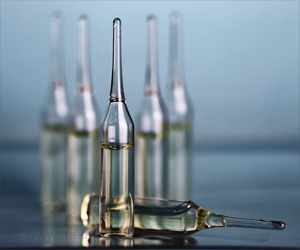The genetic elements of fruit flies that repeat may shrink with age and expand in future generations can explain the behavior of stem cells staying immortal.

‘Copies of repetitive DNA strands can be linked to aging in yeasts but for multi cellular organisms it is still a mystery.’





In the study, Yamashita and her colleagues at the University of Michigan Life Sciences Institute focused on workhorse genes encoded in ribosomal DNA, or rDNA. These genes carry instructions for the parts that make up ribosomes, cellular machines that turn RNA molecules into every protein needed in the body.To make enough of these mission-critical machines, cells need loads of rDNA instruction manuals. Most genes are limited to a single genetic location, but rDNA genes are repeated across multiple spots of the genome. In humans, for instance, five chromosomes contain stretches of rDNA genes, with each spot containing hundreds of repeating copies. This genetic repetition allows cells to churn out enough raw material for ribosomes to keep cells humming.
But the redundancy comes with a cost. Cells can slip up when they copy repetitive DNA strands and divide. "The end result is that some copies are lost every cycle," Yamashita says. "They are popping out of the chromosome."
That loss has been tied to aging for single-celled yeast. But for multicellular organisms, rDNA's role in aging has been a mystery. Yamashita and her colleagues examined rDNA genes in stem cells in the testes of fruit flies. These cells, called germline stem cells, can continuously divide, each time creating a copy of themselves and a sperm cell.
In fruit flies, chains of rDNA genes are found on the X and Y chromosomes. Compared with young male fruit flies, old males had a shortage of rDNA genes on the Y chromosome -- leaving them with a shrunken Y chromosome, the researchers discovered.
Advertisement
But then the researchers saw something surprising. In many cases, this rDNA loss reversed itself. At about 10 days of age, sons born to old fathers had recovered enough rDNA to be comparable to sons born to young fathers. "This recovery was something we really didn't expect," Yamashita says. The results suggest that rDNA rejuvenation in sons might be a crucial aspect of how stem cells persist from father to son. The researchers don't yet know whether such a reset can also happen to female stem cells in the ovaries.
Advertisement
These glimpses of perpetual life -- cells that can refresh themselves as they move down from father to son -- are what fascinate Yamashita. By finding hints about how certain cells can continually remain young, the project, "touches upon the secret of germ cells' immortality," she says.
Source-Eurekalert











